The Nose Knows: How K-9 Units Revolutionize Law Enforcement
By Parth B. · ~25 min read
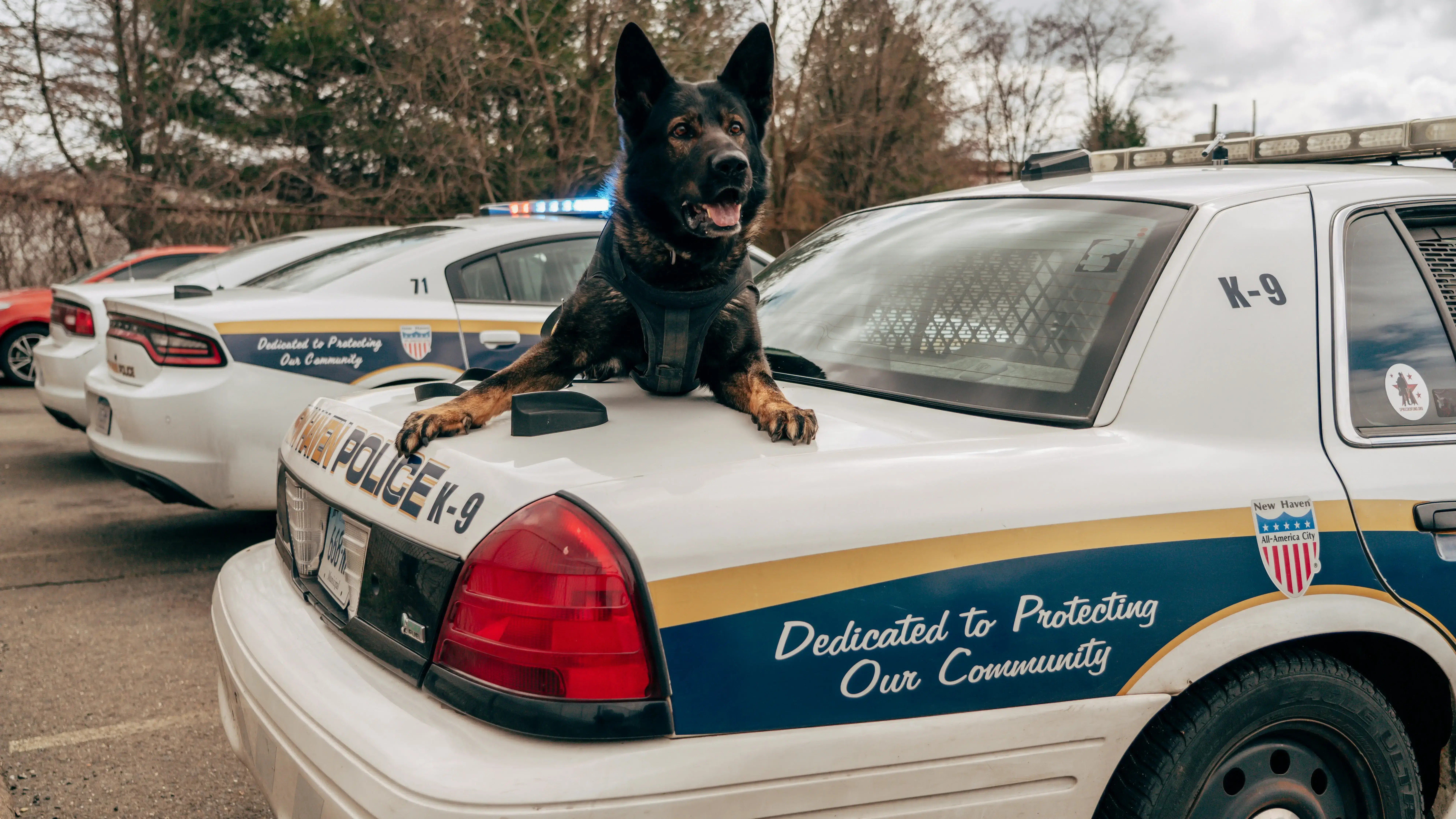
Law enforcement agencies across the United States are increasingly turning to police dogs – commonly known as K-9 units – to perform tasks that humans simply can't do as effectively. With an estimated 50,000 active police K-9s serving nationwide, these four-legged officers have become indispensable partners in fighting crime and safeguarding communities. From sniffing out hidden narcotics and explosives to tracking down fleeing suspects and missing persons, K-9 units leverage their incredible noses and loyal hearts to revolutionize modern policing. This article provides an in-depth look at how K-9 units work, the roles they play in U.S. law enforcement, their training, and the profound impact they have on public safety. [Source]
A Brief History of K-9 Units in U.S. Law Enforcement
Police dogs have been used in Europe since at least the 19th century, but the United States was somewhat slower to adopt them. The first organized American K-9 program began in 1907, when the New York City Police Department imported trained dogs from Belgium after studying Europe's success with canine policing. By 1911, NYPD had 16 dogs patrolling at night with their handlers, using methods borrowed from the famous Ghent, Belgium training school. Early results were mixed – while the dogs did chase and hold suspects as trained, the program faced challenges such as high costs and public complaints (imagine late-night strollers being accosted by overzealous patrol dogs). In fact, one New Jersey town that tried using police dogs in 1910 ended its K-9 unit by 1918, partly because the advent of motorized patrol cars reduced the need for dog patrols. [Source]
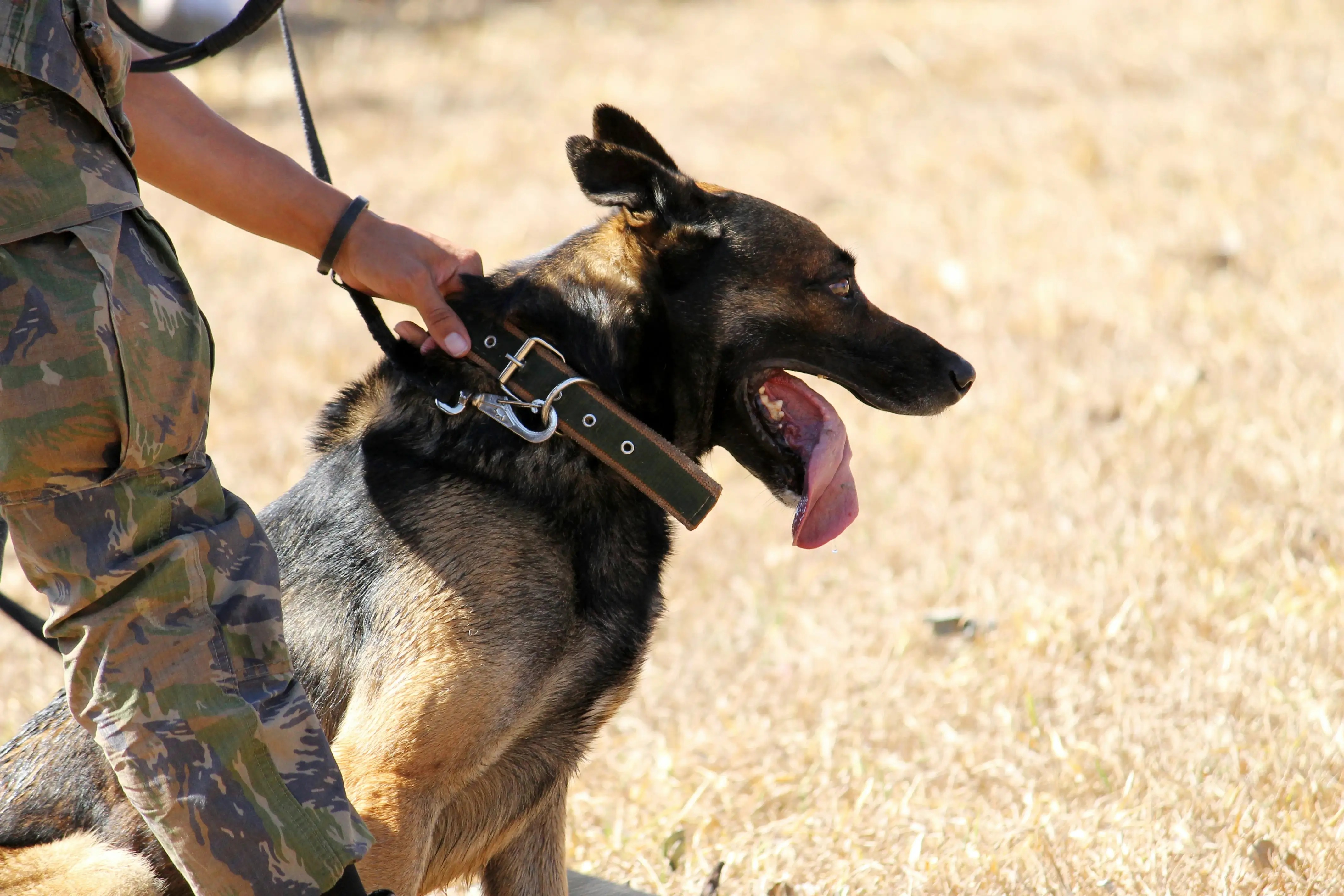
A K-9 handler conducts training exercises with a police dog, demonstrating controlled apprehension techniques. Regular training sessions like these maintain the critical bond and communication between handler and K-9 partner.
After these early attempts waned, World War II provided new inspiration for American law enforcement. The successful use of military dogs in the war effort – for sentry duty, search-and-rescue, and detecting enemy fighters – showed what well-trained canines could do. In the 1950s, police departments began experimenting with K-9 units again. Not every attempt succeeded (Dearborn, Michigan's 1954 K-9 program was disbanded after a short trial, and a similar effort in Portland, Oregon struggled due to training and logistic issues). However, a turning point came in 1956 when the Baltimore City Police Department established the first modern K-9 corps in the U.S. – a program that was so successful it drew national attention. Baltimore's trained dogs proved their worth in patrol and detection duties, prompting other cities to follow suit. By the 1960s and 1970s, K-9 units were proliferating across the country, and today almost every major law enforcement agency has its own K-9 unit to assist in a variety of operations. [Source]
The Science of the Canine Nose: Why "The Nose Knows"
Why are dogs so valuable to law enforcement? The answer starts with their extraordinary sense of smell. Dogs possess up to 225 million scent receptors in their noses (far more than a human's mere 5 million). Parts of a dog's brain devoted to analyzing smells are also much larger than a human's, allowing them to detect minute traces of odors that people would never notice. In practical terms, a well-trained police dog can sniff out substances and people with astonishing accuracy and speed. For example, detection dogs can pick up the scent of narcotics or explosives even when hidden in vehicles or luggage – tasks that would be akin to finding a needle in a haystack for a human officer. The FBI notes that its explosive-detection dogs can recognize about 19,000 different combinations of explosive odors, from TNT to improvised bomb ingredients, helping keep facilities safe from threats. [Source]
Crucially, dogs can discern specific scents even when they're masked by other odors. This ability is why a K-9 can, say, locate a package of illegal drugs sealed in gasoline or buried under trash – the dog's nose picks out the target odor amid a mélange of distracting smells. Scientists and handlers often sum it up this way: "A bomb dog's nose is still the most effective way to locate the odor of an explosive, even with all the new technology…" In other words, despite advances in sensors and machines, nothing currently matches the canine nose for certain detection tasks. This incredible olfactory power underpins all the specialized roles that K-9 units fulfill in law enforcement, from drug enforcement to search and rescue. [Source]
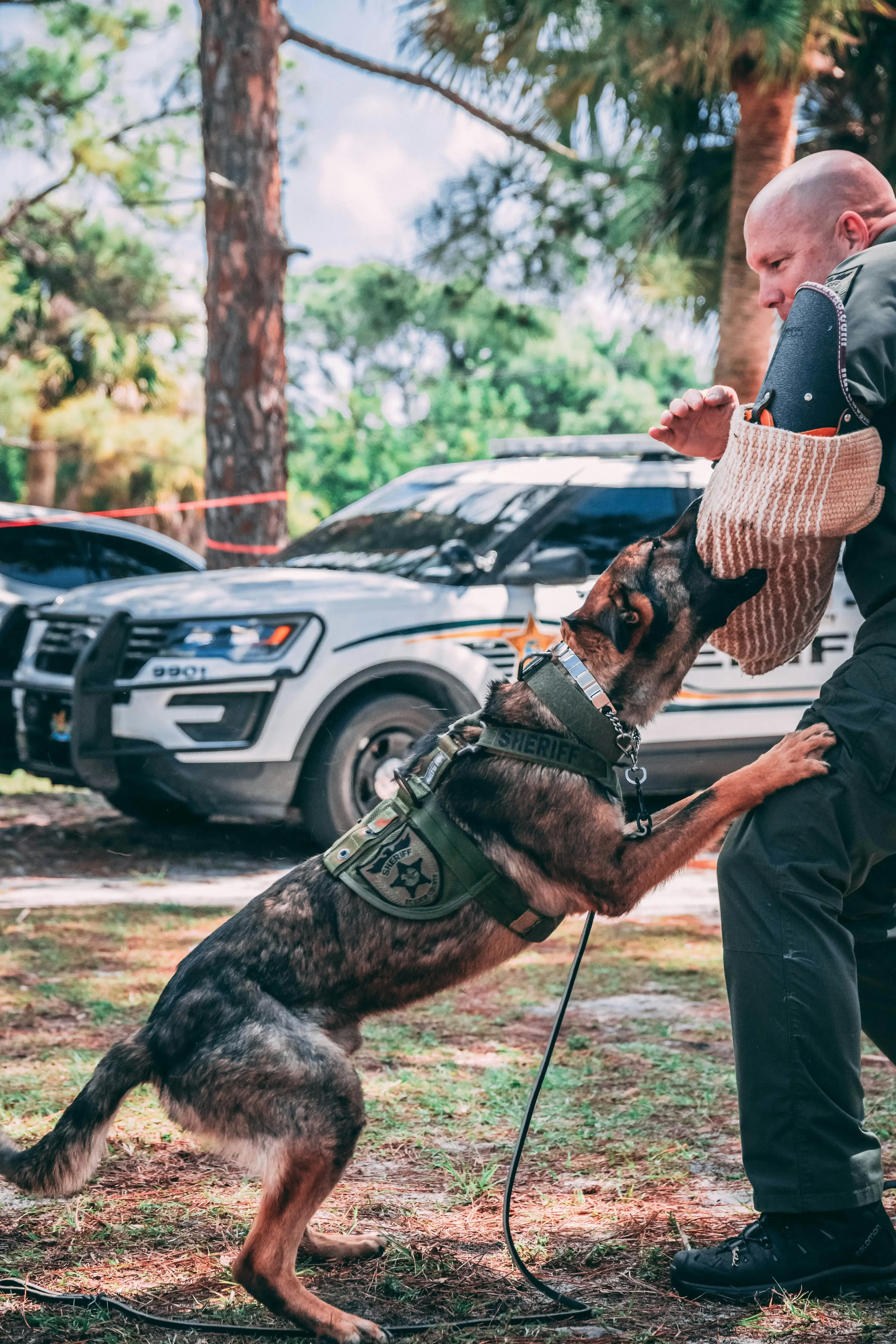
A K-9 handler conducts training exercises with a police dog, demonstrating controlled apprehension techniques. Regular training sessions like these maintain the critical bond and communication between handler and K-9 partner.
Key Roles and Capabilities of K-9 Units
Modern police dogs are trained for a wide range of duties that capitalize on their senses, agility, and trainability. Below are some of the core roles K-9 units play in U.S. law enforcement, each of which has significantly enhanced police capabilities and public safety:
• Narcotics and Contraband Detection: Perhaps the most well-known police dog task is sniffing out illegal drugs. K-9 "drug dogs" can detect the odor of narcotics such as cocaine, heroin, methamphetamine, and marijuana, even when those substances are hidden in vehicles, buildings, luggage, or on persons. At U.S. borders and airports, K-9 teams with U.S. Customs and Border Protection (CBP) search for smuggled drugs, concealed currency, and even hidden human stowaways attempting to enter the country. With their noses, these dogs uncover contraband far faster than any human inspector could. In fact, CBP's K-9 program – operational for over 50 years – is now the largest law enforcement canine program in the country, with more than 1,500 canine teams deployed at ports of entry and checkpoints. Every day, CBP dogs help intercept thousands of pounds of illegal drugs and other contraband that would otherwise harm American communities. Police dogs at the local level are just as vital: a single K-9 team can sniff a car or building in minutes, whereas officers might miss a cleverly hidden stash. By taking illicit drugs off the streets, K-9 units also help reduce related crimes (estimates suggest up to 70% of property crimes are linked to drug abuse) – in this way, "the Narcotic Detector Dog is an invaluable tool in… protecting our communities". Real-world results back this up: for example, in just a four-year span, two K-9 teams in Warwick, Rhode Island seized 150 lbs of marijuana, 33.5 lbs of heroin, 91 lbs of cocaine, and nearly $1 million in drug money – contraband that would otherwise be fueling crime. [Source]
• Explosives Detection and Bomb Squad Support: In an age of terrorism and mass threats, bomb-sniffing dogs have revolutionized how law enforcement prevents and responds to explosive hazards. These K-9s (often friendly breeds like Labrador Retrievers, which integrate well in crowds) are trained to detect a spectrum of explosives, from military-grade ordnance to homemade bombs. They are deployed to sweep sports arenas, concert venues, airports, government buildings, and VIP events for any sign of bombs. The presence of bomb dogs provides not only detection but also deterrence – would-be attackers know a dog can sniff out explosives, serving as a highly visible psychological deterrent in crowded events and "soft targets". One bomb detection K-9 team can quickly sweep an area much faster than a group of humans using equipment, freeing up officers and reducing search times. This speed is critical during bomb threats, where every minute saved could mean lives saved. The U.S. Secret Service, FBI, and local police bomb squads all rely on explosives detection dogs. In fact, post-9/11, demand for such K-9 units has skyrocketed – the FBI started its in-house K-9 program in 1999 and expanded it rapidly after 2001 to meet security needs. As the Utah POST (Peace Officer Standards and Training) agency summarizes, "a Bomb Dog's nose is still the most effective way to locate an explosive…even with all the new technology… [and can] perform a sweep… faster than a team of individuals", making these dogs invaluable during bomb threats or preventive security sweeps. Their work has prevented countless tragedies by catching explosives before they detonate. [Source]
• Tracking and Suspect Apprehension: Many police dogs – typically German Shepherds, Belgian Malinois, or other herding breeds – are trained in patrol and apprehension duties. Their job is to assist officers in tracking, chasing, and subduing criminal suspects who attempt to flee or hide. With their superior noses, K-9 trackers can follow the trail of a missing suspect through woods, urban streets, or buildings, even long after the person has passed by. This capability is known as mantrailing or tracking, using scent from skin cells or clothing. A well-trained dog can pick up a trail from a footprint or an article dropped by a suspect and lead officers right to the hiding individual. Police K-9s are also schooled in controlled aggression – they will bite and hold dangerous suspects on command, subduing an armed or violent person until officers can safely take custody. In many cases, the mere threat of "sending in the dog" convinces suspects to surrender peacefully, avoiding a more dangerous confrontation. Police veterans often say that few things strike fear in a fugitive like the bark of a K-9; these dogs have a deterrent effect on suspects "to keep [them] from fleeing or fighting with police officers", as one department notes. Importantly, using a dog to apprehend a suspect can be safer for the officers – a K-9 can go into a dark building or around a blind corner first, and alert to a hidden suspect or ambush from a safe distance. This early warning saves human officers from walking into danger unknowingly. Many lives – both officers and bystanders – have been protected thanks to K-9s stopping violent suspects in their tracks. For instance, a police dog named K9 Dux in Spotsylvania, Virginia charged after an armed fugitive in 2016; even after being shot and wounded, Dux helped stop the suspect from escaping and made a full recovery, later earning honors for bravery. Stories like this underscore how K-9 teams put their lives on the line alongside human officers.
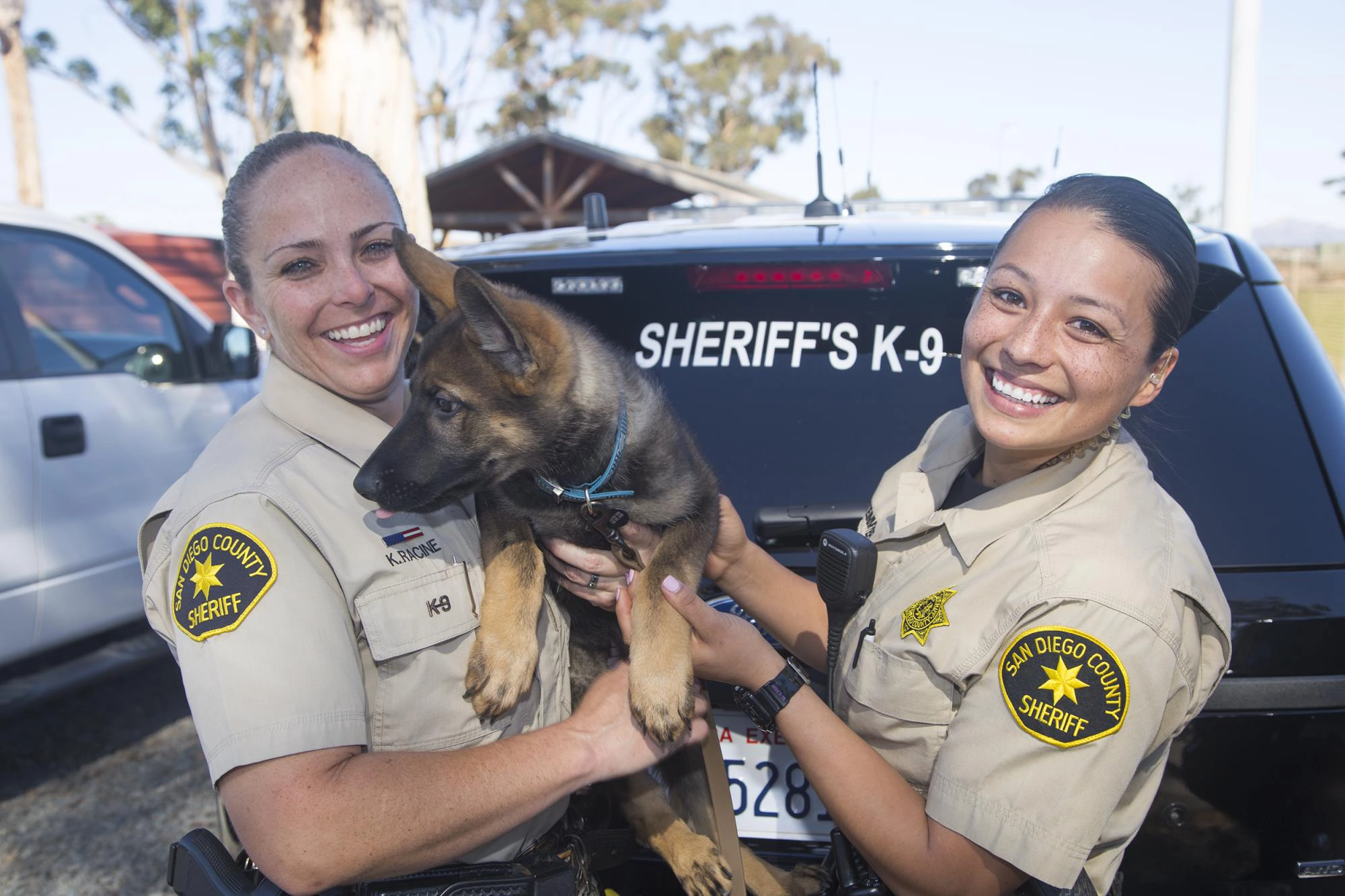
San Diego County Sheriff's deputies with their K-9 partner demonstrate the human side of law enforcement. These K-9 teams serve as ambassadors for their departments, fostering positive relationships with the community they protect.
Photo credit: San Diego County Sheriff's Department | Source: JoinSDSheriff.net
• Search and Rescue (SAR): Not all heroes wear capes – some wear collars. Search and rescue dogs are trained to find missing or endangered persons, whether it's a child lost in the woods, a hiker injured on a mountain, or victims buried in rubble after a disaster. With their powerful noses, SAR dogs can cover huge areas far more quickly than human searchers – they literally follow the scent of humans in the air or on the ground, cutting through large forests or collapsed buildings systematically. Time and again, these K-9s have located people who would likely never have been found in time otherwise. A recent example comes from Arizona in June 2025: a 5-year-old boy wandered into the desert and got lost. K-9 "Piper," a bloodhound with the Maricopa County Sheriff's Office, was deployed and quickly picked up the child's scent – leading rescuers straight to the boy and his pet dog, safe and sound. The sheriff's office credited Piper's "crucial tracking skills" for the happy ending. Search dogs are also invaluable after disasters like earthquakes, building collapses, or hurricanes, where they locate survivors (or recover the deceased) much faster than teams of people could. Some dogs specialize in certain environments – for example, bloodhounds excel at trailing specific human scents over long distances, while other breeds might be trained in cadaver detection to find human remains in homicide cases or disasters. There are even water search dogs that can detect drowning victims under the surface. Overall, K-9 search teams provide unique precision and speed in rescue operations, often meaning the difference between life and death in critical hours. Their contribution to saving lives has cemented their role as essential first responders in many emergencies. [Source]
• Evidence and Specialty Detection: Beyond the common duties above, some K-9s are trained for highly specialized detection tasks that address emerging law enforcement needs. For example, arson investigation dogs can sniff out trace amounts of accelerants (like gasoline or lighter fluid) at fire scenes, helping fire marshals determine if a blaze was deliberately set. These arson dogs can identify burn patterns and residues that lab tests might take weeks to confirm. Another cutting-edge role is electronics-sniffing dogs – yes, dogs that can detect electronic storage devices such as USB flash drives, memory cards, and cell phones. Agencies began using them in recent years particularly to combat child pornography and data theft crimes, where suspects hide tiny memory cards with illegal images or evidence. In one case, Minnesota police trained a Labrador named Sota to detect the chemical compounds in electronics; she has since helped find hidden SD cards and hard drives in multiple criminal investigations. Such electronic detection K-9s gained fame after a dog named Bear assisted in the high-profile arrest of a predator by finding a well-concealed flash drive that investigators missed. Police dogs may also be trained to locate firearms and shell casings (sniffing out gunpowder residue) or even deadly narcotics like fentanyl (with care taken to keep the dog safe from exposure). Each of these specialties demonstrates the expanding frontier of what a dog's nose can do. If there's a scent associated with a law enforcement challenge, there's a good chance someone is training a dog somewhere to detect it. And often, the dog can do it faster and more reliably than any machine – truly showcasing how K-9 units have revolutionized evidence gathering. As one local police department put it, "a patrol dog is able to locate evidence… faster, with less manpower and more accuracy" than officers searching by eye. [Source]
• Public Order and Officer Safety: Police K-9s also contribute to general public safety in ways that are sometimes less visible but equally important. For instance, crowd control dogs are deployed during large events, protests, or riots to help maintain order. The sight of a well-trained dog alongside officers can dissuade violent behavior and keep crowds calmer – few people want to challenge a police line that includes an attentive German Shepherd. K-9 units also perform building searches (clearing a building of suspects after a break-in, for example) far faster and safer than officers alone. Thanks to their agility and noses, a single dog can check rooms, closets, and hiding spots in a fraction of the time, and will alert or bark if someone is hiding. In fact, it's reported that a patrol dog can search an average building up to 4 times faster than human officers can, while using far fewer personnel. This efficiency not only saves time but also reduces risks – the K-9 team can clear the scene, allowing backup officers to return to other duties sooner. Additionally, many K-9s are trained to protect their handlers; they will physically place themselves between an officer and a threat if necessary. This loyalty and protective instinct have saved officers' lives in sudden confrontations. Overall, the presence of a K-9 makes officers "safer… since a K9 can alert to an armed suspect from a far distance" and discourage suspects from resisting. By amplifying officers' capabilities and adding an element of deterrence, K-9 units profoundly enhance daily law enforcement operations. [Source]
• Community Engagement and Public Relations: Interestingly, while police dogs are trained for toughness on duty, they often have a softer side that agencies use for community outreach. Many K-9 teams visit schools, fairs, and community events to give demonstrations of the dogs' skills and to let the public meet these canine officers. This helps humanize the police force and is a big hit with kids and adults alike. Children who might be afraid of police often warm up to a friendly dog performing tricks or obedience drills. The Florida Sheriffs Association notes that K-9 units serve as "ambassadors for law enforcement agencies, fostering positive relationships with the community" when they appear at public events. Some departments even have mascot dogs or therapy dogs (like "comfort K-9s") that provide emotional support to victims and promote goodwill. A recent example at the federal level: the FBI has added "crisis response canines" to support victims of crimes and build trust with communities. Whether it's a PR demo or a serious debrief after a traumatic event, dogs have a way of breaking the ice and offering comfort that humans sometimes cannot. This role might not grab headlines like a drug bust or suspect takedown, but it's an important part of how K-9 units revolutionize law enforcement's engagement with the public. They make the police more approachable and underscore that these dogs – and by extension their human partners – are there to protect and serve people. It's hard not to smile when a police dog shows off a skill or simply wags its tail at a community meet-and-greet. [Source]
Rigorous Training and Unbreakable Bonds: How K-9 Teams Are Made
Behind every successful K-9 unit is a formidable amount of training – for both the dog and the human handler. Police dogs are not born ready to sniff out bombs or chase down criminals; they undergo months of intensive training to hone their natural abilities into specific skills. Most dogs are started young (often around 1–2 years old) when they have the maturity to focus but still the energy to work for years. They begin with basic obedience – a foundation of following commands, socializing in various environments, and responding reliably to the handler. Then comes the specialty training in whatever field they'll work: narcotics detection, explosive detection, tracking, patrol/apprehension, etc. During this phase, dogs learn to recognize target scents (such as specific drug odors or explosive compounds) and to indicate finds to their handler – often by sitting and pointing with their nose, or pawing at the spot where the odor is strongest. They also learn agility and endurance skills: jumping over walls, crawling through tunnels, climbing stairs, and riding in vehicles, so they'll be prepared for any situation.
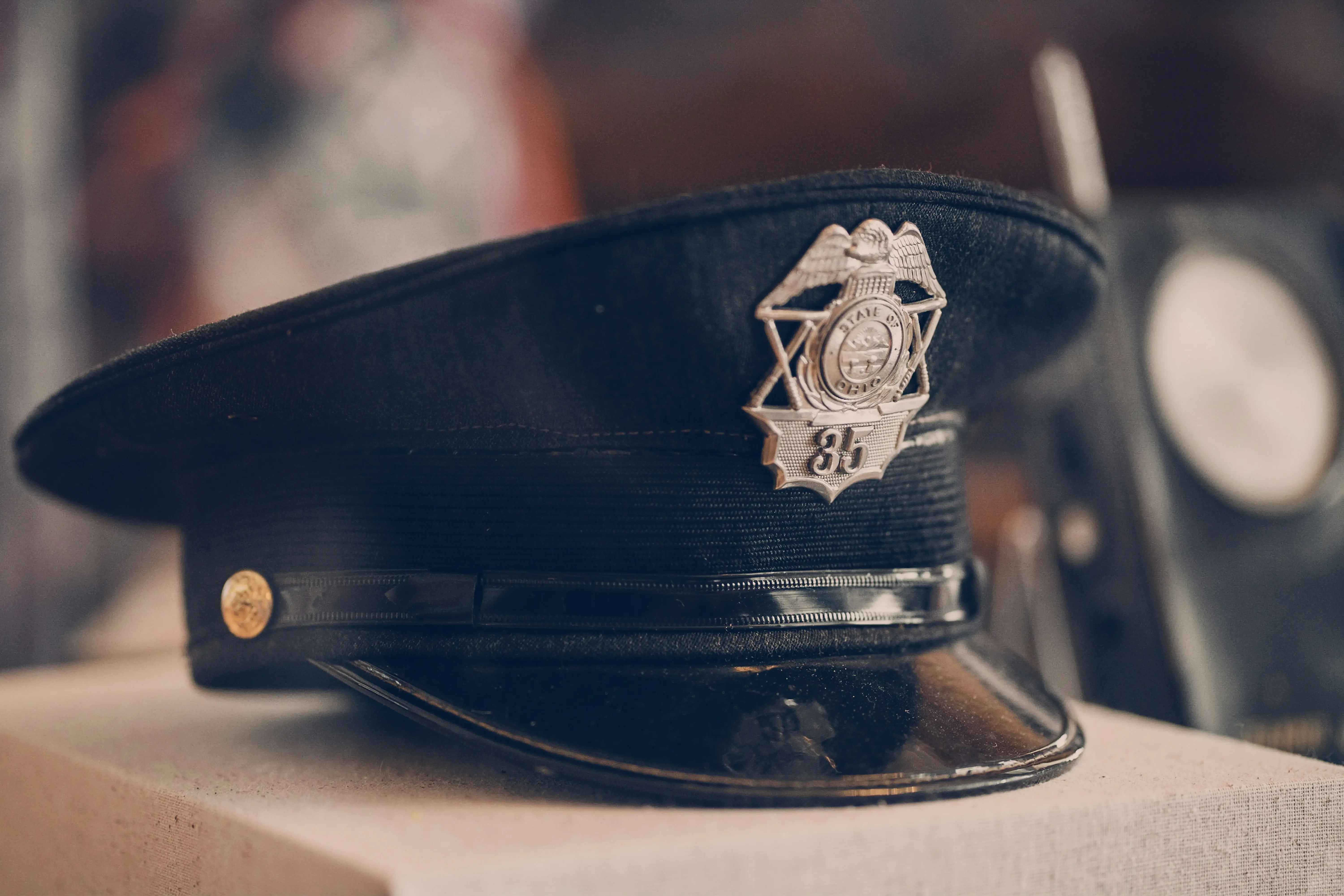
A police officer's uniform cap bearing badge number 35. Behind every badge is a human officer who partners with K-9 units to serve and protect their community.
Training is not a one-time event but an ongoing process. Police K-9s and their handlers typically train daily or weekly to keep skills sharp. For example, the Glendale Police Department in California notes that its K-9 teams train every day on duty, with one full day each week dedicated solely to various drills – from detection exercises to obedience to simulated suspect apprehensions. Many states require annual or periodic certification for police dogs in their specialty. Handlers and dogs often attend K-9 academies together, cementing their partnership. The Florida Sheriffs Association describes how handlers train alongside their dogs to learn to "effectively communicate with and control the K-9 as well as interpret its behavior and responses". Indeed, the bond between a K-9 and handler is critical , it's often said the pair becomes one unit with almost a telepathic understanding of each other. This bond is forged by working together every day and even living together: most agencies have handlers bring the dog home, so the K-9 lives with the officer's family and is a 24/7 partner. The dog becomes part of the officer's "pack," which deepens loyalty and trust. Handlers are responsible not just for training but for feeding, grooming, and caring for their K-9s off duty. [Source]
The investment in training is significant – and not just in time, but money. Purchasing a quality police service dog (often from specialized breeders in Europe or the U.S.) can cost anywhere from $7,000 to $15,000 (or more for certain breeds). Then the initial training course, which might last 6–12 weeks, can cost another $10,000–$15,000. Combined, departments often spend around $20,000–$30,000 to acquire and train one police dog initially. Ongoing costs include food, vet bills, equipment (like leashes, harnesses, and sometimes protective vests for the dogs), and continuous training. Some estimates put the total cost of a police K-9 over its lifetime well above $50,000 when factoring in all expenses. These costs explain why not all departments have K-9s and why some rely on community donations or grants to start a K-9 program. However, law enforcement leaders widely recognize that the benefits far outweigh the costs. As one Congressman noted, police dogs are "integral" to public safety and their contributions – seizing drugs, finding bombs, saving lives – are priceless. Efforts are underway (through proposed legislation like the K-9s Service Act) to even fund veterinary care for retired police dogs, so that handlers aren't burdened with those costs when their K-9 partners grow old or get injured. This push reflects how much respect and gratitude these animals command after a career of service. [Source]
It's worth noting that not every dog can become a police dog. The selection is rigorous – dogs must have the right temperament, drive, and physical traits. Breeds like German Shepherds, Belgian Malinois, Dutch Shepherds, and Labrador Retrievers are popular because many individuals of these breeds have the needed energy, intelligence, and resilience. For example, herding breeds have a natural mix of strength and smarts that historically let them control livestock – traits now repurposed to apprehend suspects or search wide areas. But even within a breed, each dog is tested for their hunt drive (will they tirelessly chase a scent?), their composure (can they stay focused amid gunfire, crowds, or loud noises?), and their sociability or appropriate aggression (will they distinguish a threat from a non-threat and only react on command?). Dogs that excel in training truly love to work – for them, finding a hidden object or suspect is like a rewarding game. Many police dogs are trained with reward systems – some get a favorite toy (like a ball or tug rope) when they make a find, while others, such as those in the FBI, even use their daily meals as the reward (the dog only eats after completing training tasks). This creates an incredible work ethic; as one FBI K-9 handler put it, "These dogs train every day of their life… We hide something, they find it, they get fed". The dogs want to work and literally stake their meals on their performance, which is reflected in their remarkable success rates and dedication. [Source]
A Profound Impact on Public Safety and Policing
The rise of K-9 units over the past several decades has undeniably revolutionized law enforcement in the U.S., bringing capabilities that were once unimaginable. These dogs have saved lives, protected officers, and made communities safer in countless ways. To illustrate the impact: between 2011 and 2013, a single metro police K-9 unit in Utah (six dog teams) conducted 455 felony suspect searches, locating 133 suspects that likely would have escaped without the dogs' help. That's 133 criminals off the streets in one city because of K-9 noses leading the way. Multiply such figures by the thousands of K-9 teams working nationwide, and you get a sense of the scale – police dogs are quietly solving crimes and preventing harm every single day across America.
Another aspect of their impact is efficiency. As discussed, one dog can do the work of several officers in certain scenarios (searching buildings, luggage, vehicles) in a fraction of the time. This force-multiplier effect means departments can cover more ground with limited manpower. Especially in an era where police resources are often stretched, K-9 units save precious time during emergencies. The difference between finding a bomb in 5 minutes with a dog versus 20 minutes with manual searching could be the difference between averting an explosion or not – there's real, quantifiable value there. In terms of drug interdiction, the amount of narcotics seized with K-9 assistance is staggering. U.S. Customs and Border Protection acknowledges it couldn't interdict the volume of illicit drugs it does without "a little help on four legs" – the dogs are critical for detecting narcotics like fentanyl which cartels now hide in smaller, more potent quantities that tech scanners might miss. By catching these deadly drugs, K-9s are directly preventing overdoses and drug-related violence in communities. [Source]
The heroism of K-9s also merits emphasis. Dozens of police dogs have given their lives in the line of duty, whether charging an armed suspect or searching a hazardous scene. They have saved their human partners from ambushes and taken bullets or stabbings that were meant for an officer. Recognizing this sacrifice, harming or killing a police dog is a serious crime in the U.S. – under federal law, killing a K-9 officer can carry a 10-year prison sentence, and many states have increased penalties further (for instance, Florida now allows up to 15 years for killing a police dog, and other states are following suit). This reflects a societal consensus that police animals are not "equipment" – they are officers and beloved partners. As a Kansas lawmaker advocating "Bane's Law" (named after a K-9 killed in action) said, "It is a huge hit on every agency to lose an animal that's part of their team… protect those that protect us". Public outpourings of grief at police dog funerals, like the one for K-9 Rico in South Carolina attended by hundreds, show how much these animals touch lives. They are mourned as heroes, and rightly so. [Source]
Of course, the deployment of K-9s is not without challenges. Police agencies must ensure dogs are used appropriately and handlers are well-trained to control them. There have been incidents (heavily reported in recent years) where a K-9 inflicted injury on a suspect who was surrendering or where misuse raised concerns. Such cases have led to some departments reviewing policies – for example, the Salt Lake City police suspended their bite dog program in 2020 after an audit found several problematic bites. These situations underscore the need for continued oversight, proper training, and community engagement to maintain trust. Many departments have responded by refining K-9 policies, emphasizing de-escalation (using the dog's presence as a deterrent so force isn't needed), and ensuring that commands to call off a dog are obeyed promptly. It's a reminder that while K-9s are powerful tools, they must be handled with the same responsibility and accountability as any law enforcement method. Fortunately, the vast majority of K-9 deployments end safely and successfully, with the dogs doing exactly what they were trained to do – whether that's finding evidence or convincing a suspect to peacefully surrender.
In sum, K-9 units have fundamentally changed the game in law enforcement. They extend the senses and capabilities of officers in ways that keep us safer. They can find what's hidden, whether it's a bomb that can't be seen, drugs with no visible trace, or a suspect who fled into the night. They save countless hours in investigations and searches. They prevent violence by diffusing dangerous situations early. And they form a bridge between the police and the public, often softening the image of law enforcement through their mere presence. As one lawmaker put it, these dogs "contribute immensely to public safety" and are true partners in the mission.
Four-Legged Revolutionaries in Blue
From the first moment a police dog finds a piece of evidence that a human missed, or collars a suspect who thought he got away, it's clear that law enforcement K-9s are an invaluable asset. They have proven their worth case by case, and nose by nose. The phrase "The Nose Knows" isn't just a catchy saying – it captures the almost miraculous-seeming ability of these dogs to detect, track, and uncover things beyond human capability. In doing so, K-9 units have revolutionized law enforcement by adding a tool that is neither weapon nor technology, but a living, sentient partner. They bring out the best of nature's design – the canine nose and loyal heart – and combine it with rigorous training and human partnership to make our communities safer.
Law enforcement continues to invest in and expand K-9 programs because the results speak for themselves: lives saved, crimes solved, disasters mitigated, drugs and guns taken off the streets, and even intangible benefits like improved community relations. These dogs work for our praise and a toy or treat, but give back far more – including, at times, the ultimate sacrifice. As the public learns more about what K-9 teams do, support for them remains strong. Programs to provide bulletproof vests for K-9s, funding for their medical care, and honors for their service (like medals and memorials) all show that we recognize these dogs as true officers. They may walk on four legs, but they stand tall in the line of duty.
Police K-9 units exemplify how innovative approaches in law enforcement can yield tremendous benefits. By harnessing a dog's natural abilities and forging a deep human-canine bond, police have gained partners that make them more effective and more approachable at the same time. As long as crimes need solving and people need saving, it's a sure bet that somewhere a dog's nose will be sniffing out the next lead. The K-9 motto is often "Partners for life" – fitting for a relationship where each partner would readily risk their life for the other. America's K-9 units have earned their place in the police cruiser and in the public's heart, one courageous sniff at a time.

